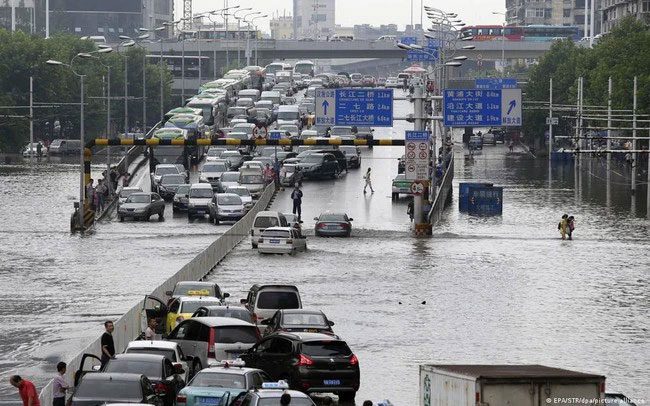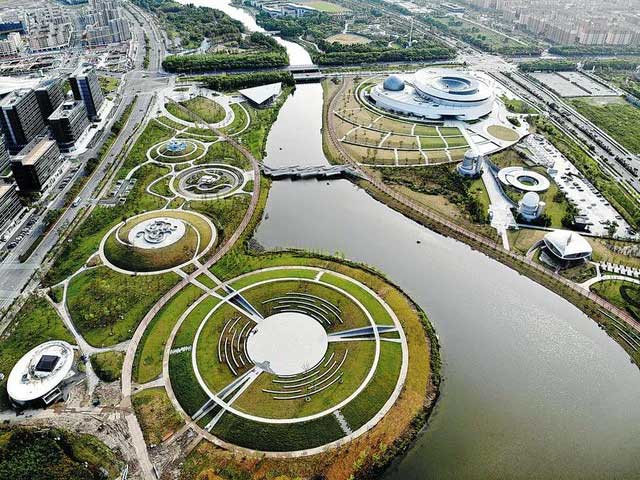China Invests Billions of USD in “Sponge City” Model to Combat Urban Flood Risks.

Widespread flooding in China. (Photo: EPA).
However, the recent record rainfall has revealed that the “sponge city” model still has some limitations.
A sea of water surrounded the city of Zhangjiakou, Hebei Province, during the recent historic flooding. This city was developed according to the “sponge city” model. This model employs rooftop gardens, permeable sidewalks, underground reservoirs, and sponge-like features to absorb large amounts of rainfall and then gradually release it into rivers or reservoirs. However, this flooding event has exposed many shortcomings of this model.
Genevieve Donnellon-May from the Asian Social Policy Institute stated, “This flood event has highlighted the limitations of the ‘sponge city’ concept and the current drainage systems, not only in Beijing but also in several cities across China. The rapid urbanization in China is straining stormwater management and drainage systems.”

Sponge cities are reportedly not suited for extreme weather conditions. (Photo: China Daily)
In China, the designs of the “sponge city” model are based on 30 years of rainfall data up to 2014. However, the record rainfall from last weekend raises questions about the model’s relevance in the face of increasingly severe climate change.
Associate Professor Faith Chan from the University of Nottingham in Ningbo, China, noted: “Sponge cities may provide significant benefits for managing small and frequent rainfalls. However, sponge cities are not suitable for extreme weather conditions.”
Experts suggest that future construction efforts need to learn from large-scale flooding events to enhance the capacity to absorb and drain rainwater and floodwaters.


















































